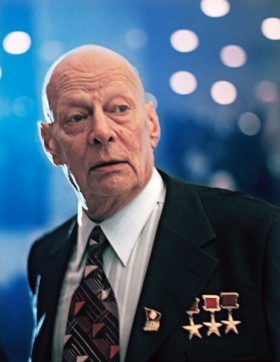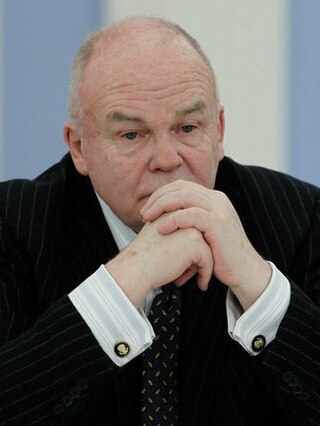This article needs additional citations for verification .(July 2023) |
RELCOM or Relcom (Russian : РЕЛКОМ, Релком), an acronym for "RELiable COMmunications" is a computer network in Russia.
This article needs additional citations for verification .(July 2023) |
RELCOM or Relcom (Russian : РЕЛКОМ, Релком), an acronym for "RELiable COMmunications" is a computer network in Russia.
It was launched in the Soviet Union on August 1, 1990 in the Kurchatov Institute in collaboration with DEMOS co-operative (although the engineering team at DEMOS at the time consisted mostly of Kurchatov Institute employees, some key members (Mikhail Davidov, Vadim Antonov, Dmitry Volodin) in the RELCOM team were never employed by Kurchatov Institute).
It became one of the first Russian computer networks (and the first commercial internet service provider in the USSR) and its development led to the emergence of the Runet. Initially it was purely e-mail network based on the UUCP protocol.
During the Soviet coup attempt of 1991 the Relcom network was used to spread news about the event worldwide while the coup perpetrators were trying to suppress mass media activity through the KGB. [1]
Now it is managed by Relcom Business Network Ltd., a Russian ISP.

Kremvax was originally a fictitious Usenet site at the Kremlin, named like the then large number of Usenet VAXen with names of the form foovax. Kremvax was announced on April 1, 1984, in a posting ostensibly originated there by Soviet leader Konstantin Chernenko. The posting was actually forged by Piet Beertema of CWI as an April Fool's prank—"because the notion that Usenet might ever penetrate the Iron Curtain seemed so totally absurd at the time".

Igor Vasilyevich Kurchatov, was a Soviet physicist who played a central role in organizing and directing the former Soviet program of nuclear weapons.

The Institute for Theoretical and Experimental Physics is a multi-disciplinary research center located in Moscow, Russia. ITEP carries out research in the fields of theoretical and mathematical physics, astrophysics, high energy particle physics, nuclear physics, plasma physics, solid state physics, nanotechnology, reactor and accelerator physics, medical physics, and computer science. ITEP also maintains an extensive educational program and organizes physics schools for scholars and undergraduates. The institute is located near the corner of the Sevastopol prospect and the Nachimowski prospect and occupies part of the former estate "Cheryomushki-Znamenskoye" - an 18th-century manor that is a monument of architecture and landscape art of the 18th-19th centuries.

The 1991 Soviet coup d'état attempt, also known as the August Coup, was a failed attempt by hardliners of the Soviet Union's Communist Party to forcibly seize control of the country from Mikhail Gorbachev, who was Soviet President and General Secretary of the Communist Party at the time. The coup leaders consisted of top military and civilian officials, including Vice President Gennady Yanayev, who together formed the State Committee on the State of Emergency (GKChP). They opposed Gorbachev's reform program, were angry at the loss of control over Eastern European states and fearful of the USSR's New Union Treaty which was on the verge of being signed. The treaty was to decentralize much of the central Soviet government's power and distribute it among its fifteen republics.

The Ioffe Physical-Technical Institute of the Russian Academy of Sciences is one of Russia's largest research centers specialized in physics and technology. The institute was established in 1918 in Petrograd and run for several decades by Abram Ioffe. The institute is a member of the Russian Academy of Sciences.

The Soviet atomic bomb project was the classified research and development program that was authorized by Joseph Stalin in the Soviet Union to develop nuclear weapons during and after World War II.

Anatoly Petrovich Alexandrov was a Russian physicist who played a crucial and centralizing role in the former Soviet program of nuclear weapons.

FAPSI or Federal Agency of Government Communications and Information (FAGCI) was a Russian government agency, which was responsible for signal intelligence and security of governmental communications.

The Kurchatov Institute is Russia's leading research and development institution in the field of nuclear energy. It is named after Igor Kurchatov and is located at 1 Kurchatov Square, Moscow.
DEMOS is a Unix-like operating system developed in the Soviet Union. It is derived from Berkeley Software Distribution (BSD) Unix.

Internet in Russia or Russian Internet and sometimes Runet is a part of the Internet which is related to Russia. As of 2015 Internet access in Russia is available to businesses and to home users in various forms, including dial-up, cable, DSL, FTTH, mobile, wireless and satellite.
EUnet was a very loose collaboration of individual European UNIX sites in the 1980s that evolved into the fully commercial entity EUnet International Ltd in 1996. It was sold to Qwest in 1998. EUnet played a decisive role in the adoption of TCP/IP in Europe beginning in 1988.

Evgeny Pavlovich Velikhov is a physicist and scientific leader in the Russian Federation. His scientific interests include plasma physics, lasers, controlled nuclear fusion, power engineering, and magnetohydrodynamics. He is the author of over 1500 scientific publications and a number of inventions and discoveries.
Vadim Antonov born May 25, 1965, is a Russian-American software engineer and entrepreneur. He is known for his work on operating systems, Internet backbone networks, network router hardware, computer security, and data warehouses. He is also known for his role in organizing civil resistance to 1991 Soviet coup d'état attempt notable for pioneering the use of Internet to effect the political change.

Dmitry Burkov is one of the Internet industry pioneers in Russia, Chairman of the Board of the Foundation for Assistance for Internet Technologies and Infrastructure Development, one of the originators of the Eurasia Network Operators’ Group (ENOG).
DEMOS (Demos) was the first internet service provider in the USSR.
OGAS was a Soviet project to create a nationwide information network. The project began in 1962 but was denied necessary funding in 1970. It was one of a series of socialist attempts to create a nationwide cybernetic network.

The history of computing in the Soviet Union began in the late 1940s, when the country began to develop its Small Electronic Calculating Machine (MESM) at the Kiev Institute of Electrotechnology in Feofaniya. Initial ideological opposition to cybernetics in the Soviet Union was overcome by a Khrushchev era policy that encouraged computer production.

The Russian Research Institute for the Development of Public Networks (RIPN) is a Russian institution that operates in two main areas:
The Russian internet is a part of the Internet with its main content in Russian. According to data from August 2019 and studies conducted by W3Techs, 6.5% of the 10 million most popular Internet sites in the world use Russian. In 2013, according to these studies, the Russian language became the second most popular on the Internet after English.